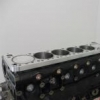Project Rb31dett. The Development Of My Open Deck Rb Engine And The Quest For More Torque!
Announcements
-
Similar Content
-
Latest Posts
-
If you get a 33 pump, bracket and harmonic balancer that will bolt straight up
-
Hey y'all, So i went to replace my outer tie rod end and it looks like my inner is cooked as well. Problem is, the inner tie rod's part no seems to be completely unique, it's not the same as in the other Skylines. It's 48521-23U25. This is NOT the same as the GTTs or GTRs. If you look online, only place I can get them is Amayama (https://www.amayama.com/en/part/nissan/48521aa325), but given that the "quantity available" is listed as ">1," it worries me that lead time on this will be infinite. Wondering if any other ENR34 owners have found replacement inner tie rods that work and are readily available? Are tie rods not that deep and easy to interchange? I'm in the USA, so if anyone else has found em, LMK! Also - it looks like this part for the Leaf is the same number, except there's a 0 added right after the U. Does this mean anything of value or are they completely different parts? 48521-3U025 - Inner Tie Rod 2007-2014 Nissan | Nissan Parts & Accessories Online
-
Would it be stupid to twin charge a skyline? Would that be possible/practical to do on an rb engine?There is no difference. The existing turbo and intercooler would very most likely not be suitable for reuse. The existing tune would be meaningless. The issues with fitting things in are exactly the same.
-
Would it be stupid to twin charge a skyline? Would that be possible/practical to do on an rb engine?Here’s a follow up question, what if you add a super charger to an already turned engine like a rb25det or something. Would the systems in place (inter coolers and exhaust manifold) be a good way to lessen time and head ache? Or would it be more annoying to add a supercharger to the turbo-ed system then designing a new system entirely?
-
Curious if you've discussed this with them, maybe they can remove it for you since you requested it not to be coated.
-





Recommended Posts
Create an account or sign in to comment
You need to be a member in order to leave a comment
Create an account
Sign up for a new account in our community. It's easy!
Register a new accountSign in
Already have an account? Sign in here.
Sign In Now